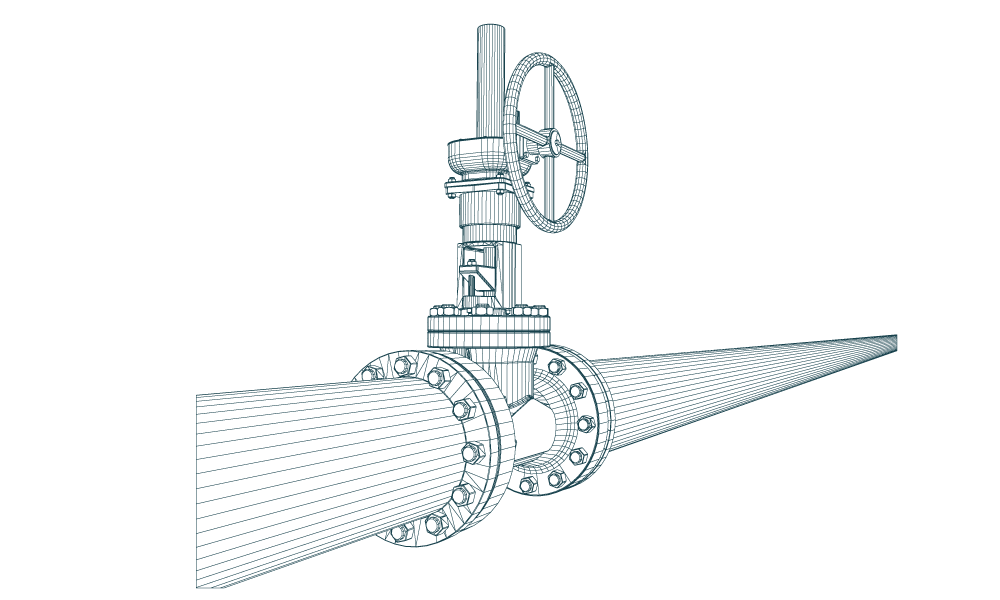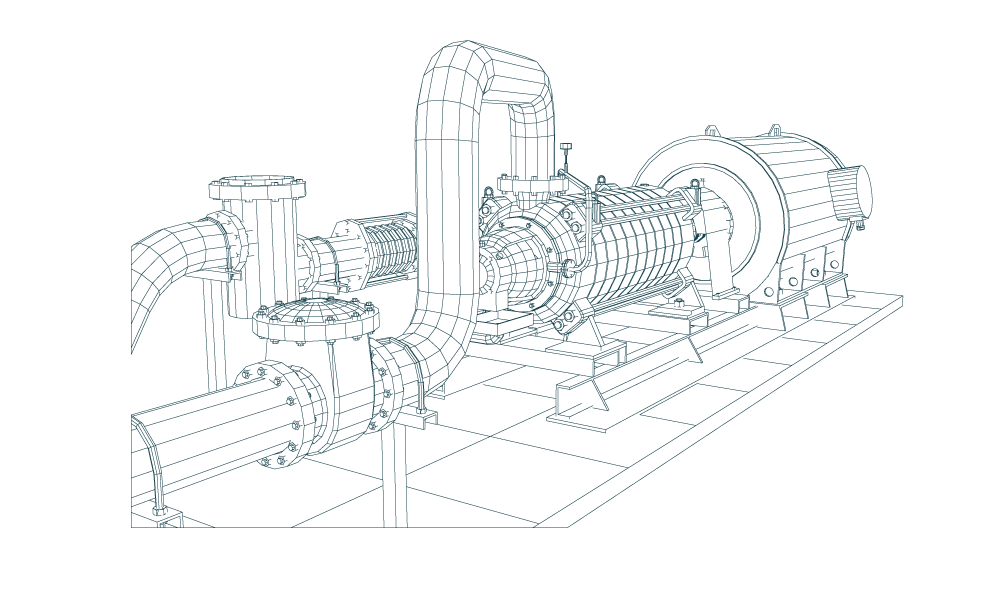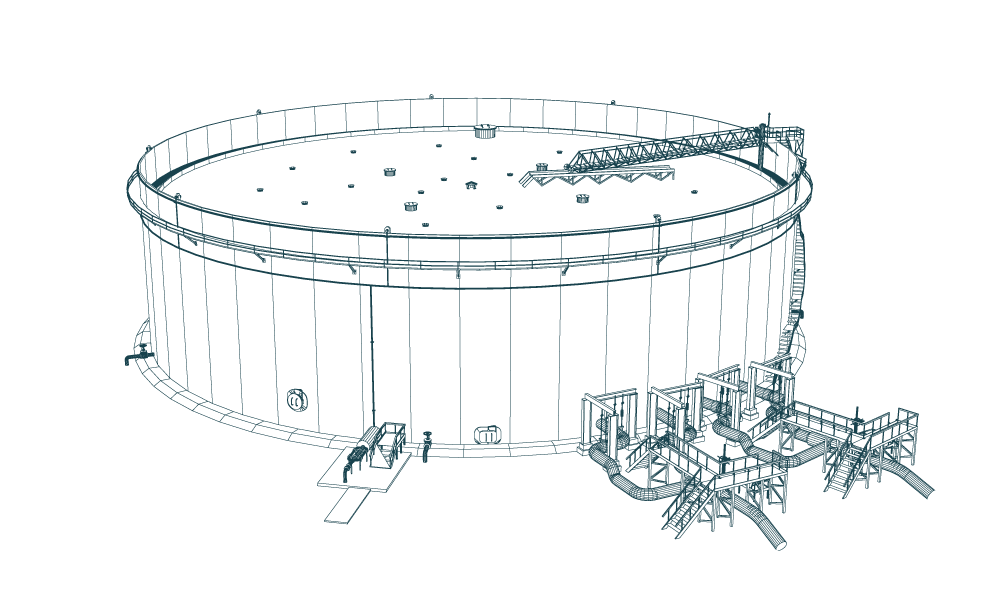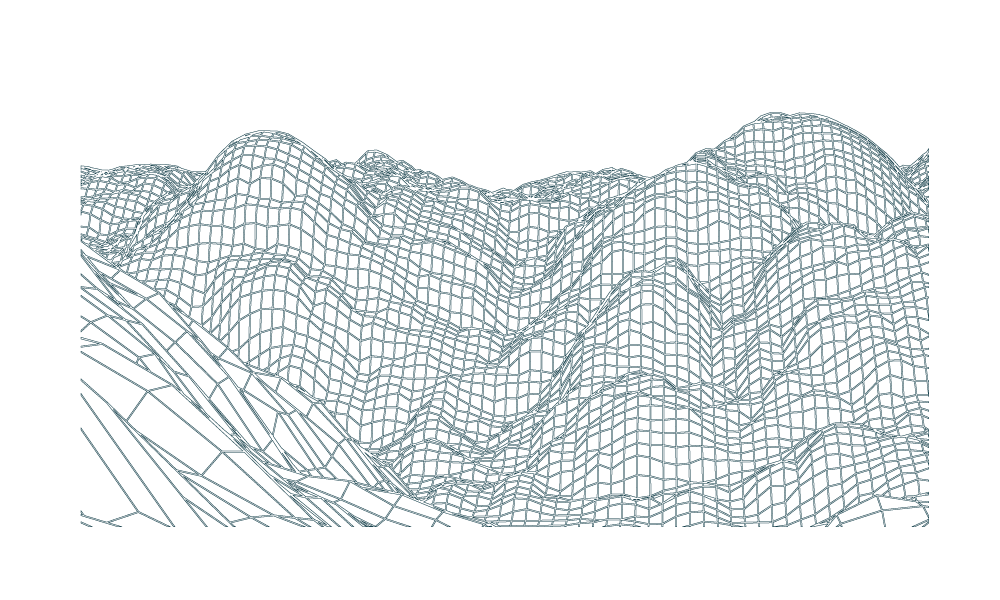PCS® Insights
Sharing Industry Knowledge, Lessons-Learned and Published Presentations
4 Steps to Facilities Traceability
Tackling the Multi-Dimensional Data & Records Challenge
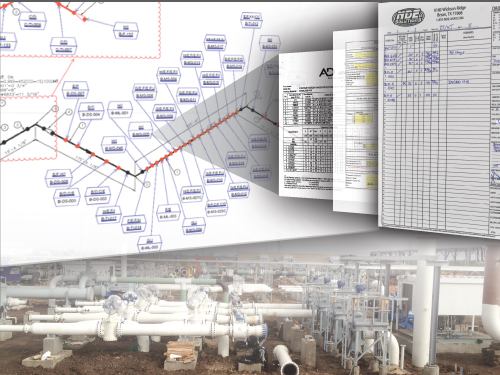
Traceability has become a familiar term for pipelines in recent years. Regulators expect the industry to produce Material Test Reports (MTRs) for every pipe segment, Non-Destructive Examination Reports (NDEs) for every weld as required in operator specifications, Welder Qualification Test Reports (WQRs) for every welder, and so on. A lot of effort is spent ensuring traceability on every foot of pipe, but what is expected at the facilities?
When you get “inside the fence” of a pipeline facility, what was a sequence of welds and a joints every 40 feet becomes an intricate series of three-dimensional bends, various diameter pipes, structures, and mechanical equipment all concentrated in a much smaller space. The as-built documentation reverts from carefully produced survey-grade alignment sheets to records like Isometric Drawings (ISOs) with data in handwritten red ink, known as “redlines.” With such a change in approaches on each side of the fence, it is often forgotten that regulated pipeline facilities are held to the same asset-level traceability standards as the rest of the pipeline (49 CFR 192 & 195), which carry the full force of the law.

Definitions of Pipeline versus a Pipeline Facility
Redlines: the Facilities As-Built
Perhaps you have struggled to find or read redline drawings in the past and have a sense of the general state of traceability on a facility. In case you have not, here is an example of what you may come across for an asset’s as-built documentation:
Example of a scanned redline drawing that typically serves as the primary record on file for this asset.
Can you read that? Are you confident that you could find the MTRs, NDEs, or WQRs that substantiate the integrity of this asset? Even if you can read the handwriting, are you confident that all the needed information was written down in the first place and that supporting documentation is available?
Facilities traceability involves two key challenges: 1. Correctly interpreting the as-built information provided by field personnel that provides all material and traceability identifiers. 2. Correlating all supporting documentation to verify the accuracy of the recorded as-built information.
Facilities bring new complexities to the traceability challenge. As a result, systems that are meant to ensure final data sets are traceable, verifiable, and complete are cumbersome and inefficient, requiring many detailed manual reviews.
Traceability: Solving A Data Problem
Traceability fundamentally works to solve a data problem with a few critical considerations: data standards, final data sets, data collection, and data validation. Technology can be leveraged to solve and prevent data problems before they arise. Having provided traceability and records management on pipeline facilities for several years now, our Traceability and Records Management group shares four steps to tackling this data problem.
1. Data Standards
First, a project team needs to understand the standards for the end deliverable in order to appreciate the requirements for developing a compliant solution. This requires engaging all stakeholders (project personnel and managers) and exploring how their roles contribute to the final data set that represents the integrity of the assets. Ultimately, the stakeholders should develop a process that meets project-specific criteria and commits to a standard data collection procedure.
2. Data Collection
Facilities inspectors are traditionally provided with isometric drawings (ISOs) and piping and instrumentation diagrams (P&IDs), upon which they mark traceability data in red ink. Sometimes they also mark up two-line plans, elevations, and sections. For example, they may draw a leader line to a weld on an ISO and write out the weld number and the IDs of the welders who performed the weld. That handwritten information often becomes the final record for an asset that connects a weld to its supporting documentation. Once reviewers manually confirm the information is complete, they are filed away.
When collecting data today, it is advantageous to collect it digitally; this creates new and exciting opportunities for data validation, aggregation, access, and disaster recovery. Text fields can be added to the project P&IDs and ISOs which can in turn be distributed to field personnel, who are responsible for populating the required weld, pipe, and heat information. This digitization of data entry promotes completeness in the documentation in a manner that is easily recognizable, legible and enforceable. When data collection is complete, the electronic document can be sent on to a validation process.
A quick note about introducing technology to field personnel. Field personnel are critical stakeholders and should be involved in the development and implementation of any technology that affects their job. In addition it is critical to provide adequate technical support to any technology particularly by people who have performed the exact tasks being asked of any field personnel.

Example of a digital deliverable with weld and heat tags hyperlinked to supporting documentation
3. Data Validation
After data is collected, it needs to be validated before being considered part of a final data set. In the case of traceability, the data entered by an inspector is compared to the asset’s supporting documentation to verify completeness and traceability. Numerous errors that require follow-up investigation and resolution often surface in this process. Sometimes it is a typo in the data, and sometimes a missing document. Comparing the data and documents to find discrepancies can be a tedious chore- unless technology is leveraged. Algorithms compare the data set with the asset documentation to find gaps in traceability. Discrepancies are flagged and reported. Such an automated report on the gaps in traceability allows manual effort to focus on resolving all reported discrepancies, facilitating the fastest and most confident path to full traceability.
4. Final Data Set
Once this validation work is complete, the relationships between the data collected are checked to confirm that information can be easily retrieved as needed. This critical electronic data and document set allows for improved as-built data security as records can now be stored and backed up on secure servers versus physical document storage which may not be secure and mostly likely does not have any backup copies.



Which picture best represents the status of your facilities data? Above are actual photos of pipeline facilities records in storage. The digital pipeline facilities records (right) is more accessible, searchable and less vulnerable than even a well-organized physical file.
Hyperlinking P&IDs to ISOs and then traceability information (heat numbers, weld numbers, welder IDs, etc.) from the ISOs to supporting records provides a complete and accessible final data set. Operators are able to rapidly retrieve traceable, verifiable, and complete records supporting the integrity of the assets in their facilities. Such a data set supports an ongoing facility inspection program (API 570, 510, 610, 653) and pays dividends throughout the life of the asset.
Conclusion
Though 100% traceability on facilities documents is difficult, it is feasible when leveraging technology to solve the data problem. With regulators expecting traceability requirements on regulated facilities that are equal to pipelines, it is crucial to consider the state of each facility’s as-built information and work to achieve complete traceability by combining planning, early communication with the entire project team, and a robust blend of people, process, and technology. Comprehensive pipeline facility traceability is obtainable when pairing technology with a shared spirit of collaboration and commitment on a project team.
Learn more about Facilities Traceability at PCS
Article Details
Author: Dalan Bayham
Operations Manager
PCS® Mandeville
More Information
Contact Us
We would appreciate any opportunity to assist you, and to connect you with the right person at PCS ® to address your needs and answer any questions.
Request Info Call Us 1-800-643-8306
